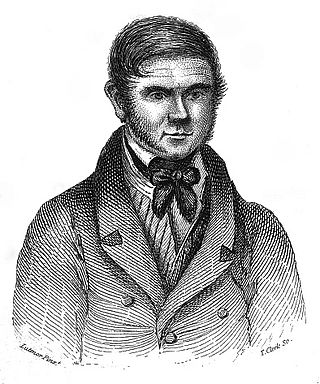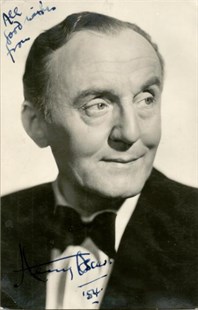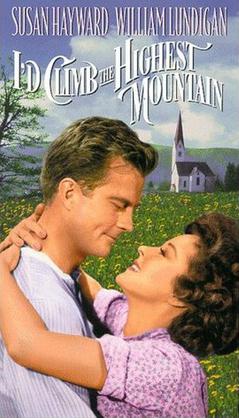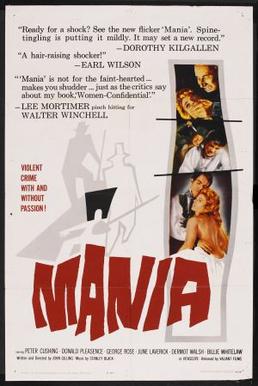
The Burke and Hare murders were a series of sixteen killings committed over a period of about ten months in 1828 in Edinburgh, Scotland. They were undertaken by William Burke and William Hare, who sold the corpses to Robert Knox for dissection at his anatomy lectures.
These are Oxford poetry anthologies of English poetry, which select from a given period. See also The Oxford Book of Twentieth Century English Verse and Eighteenth century women poets: an Oxford anthology.
"The Body Snatcher" is a short story by the Scottish author Robert Louis Stevenson (1850–1894). First published in The Pall Mall Gazette in December 1884, its characters were based on criminals in the employ of the surgeon Robert Knox (1791–1862) around the time of the notorious Burke and Hare murders of 1828.

The Idler was an illustrated monthly magazine published in Great Britain from 1892 to 1911. It was founded by the author Robert Barr, who brought in the humorist Jerome K. Jerome as co-editor, and its contributors included many of the leading writers and illustrators of the time.

Norman Carter Slaughter, also known as Tod Slaughter, was an English actor, best known for playing over-the-top maniacs in macabre film adaptations of Victorian melodramas.

Henry Wale, known professionally as Henry Oscar, was an English stage and film actor. He changed his name and began acting in 1911, having studied under Elsie Fogerty at the Central School of Speech and Drama, then based in the Royal Albert Hall, London. He appeared in a wide range of films, including The Man Who Knew Too Much (1934), Fire Over England (1937), The Four Feathers (1939), Hatter's Castle (1942), Bonnie Prince Charlie (1948), Beau Brummell (1954), The Little Hut (1957), Beyond This Place (1959), Oscar Wilde (1960), Lawrence of Arabia (1962), The Long Ships (1963) and Murder Ahoy! (1964).

I'd Climb the Highest Mountain is a 1951 Technicolor religious drama film made by Twentieth Century-Fox Film Corporation. It was directed by Henry King and produced by Lamar Trotti from a screenplay by Trotti. The story is based on a 1910 novel by Corra Harris about a minister and his wife in southern Appalachia in the early 20th century. The film stars Susan Hayward and William Lundigan with Rory Calhoun, Barbara Bates, Gene Lockhart, Alexander Knox and Lynn Bari. The music score was by Sol Kaplan and the cinematography by Edward Cronjager.
Crime Does Not Pay was an MGM anthology crime film series of shorts that ran from 1935 to 1947. Each episode was around 20 minutes in length and composer-conductor John Gart provided the music. Each installment began with an actor appearing as "your MGM crime reporter" introducing a law-enforcement official, who would inform the audience of a current criminal trend sweeping the country: drunk driving, underage crime, unscrupulous businessmen, scam artists, and so on. A case history of one such example would be shown. The approach was always dramatic with sobering, ironic, or bleak outcomes, from arrest and incarceration to disfigurement and death.

The Flesh and the Fiends is a 1960 British horror film directed by John Gilling and starring Peter Cushing, June Laverick and Donald Pleasence. 19th-century medical doctor Robert Knox purchases human corpses for research from a murderous pair named Burke and Hare. The film is based on the true case of Burke and Hare, who murdered at least 16 people in 1828 Edinburgh and sold their bodies for anatomical research.

Burke & Hare is a 1972 horror film directed by Vernon Sewell and starring Derren Nesbitt, Harry Andrews, and Glynn Edwards. It is based on the true story of the Burke and Hare murders, and was the last film to be directed by Sewell.

Burke & Hare is a 2010 British black comedy film, loosely based on the Burke and Hare murders of 1828. Directed by John Landis from an original screenplay by Nick Moorcroft and Piers Ashworth, the film stars Simon Pegg and Andy Serkis as William Burke and William Hare respectively. It was Landis's first feature film release in 12 years, the last being 1998's Susan's Plan. The film was released in the United Kingdom on 29 October 2010.

The Doctor and The Devils is a 1985 British gothic horror film directed by Freddie Francis, and produced by Mel Brooks, through his production company Brooksfilms. It is based upon the true story of Burke and Hare, who in 1828 Edinburgh, Scotland, murdered at least 16 people and sold their bodies for anatomical dissection.
The Curse of the Wraydons is a 1946 British thriller film directed by Victor M. Gover and starring Tod Slaughter, Bruce Seton and Henry Caine. It was based on the 1928 play Spring-Heeled Jack by Maurice Sandoz, which was in turn based upon the 1849 play by W. G. Willis. It was made at Bushey Studios.

Tons of Money is a farce by the British writers Will Evans and Arthur Valentine. It was co-produced by Tom Walls and Leslie Henson. In the story of the play, a hard-up inventor pretends to be his cousin, in order to escape the clutches of his creditors.

Society Doctor is a 1935 American drama film directed by George B. Seitz and starring Robert Taylor, Chester Morris, and Virginia Bruce. It was produced and distributed by Metro-Goldwyn-Mayer. It was inspired by an unproduced play by Theodore Reeves.
David Pugh was a British actor, probably best known for playing opposite Rosamund Greenwood and Roy Evans in an acclaimed early film by director Tony Scott, Loving Memory, which was shown at the 1971 Cannes Film Festival. Other film roles included Daft Jamie in Burke & Hare (1971), one of the leads in the 1972 sex comedy The Love Pill, and a creditor in Christine Edzard's 1987 Dickens adaptation, Little Dorrit.
The 2004 Queen's Birthday Honours in New Zealand, celebrating the official birthday of Queen Elizabeth II, were appointments made by the Queen in her right as Queen of New Zealand, on the advice of the New Zealand government, to various orders and honours to reward and highlight good works by New Zealanders. They were announced on 7 June 2004.











